Plenty of captivating European palaces decorate many countries throughout the continent, rich with charm, history, and artifacts.
These architectural marvels are woven with cultural, political, and social evidence from times long before us and offer a glimpse of their regal past.
Not only that, but many royal palaces in Europe allow us to understand history and relive some of it with architectural brilliance – and each has a story to tell.
If you want to visit the best European palaces and are curious about what they offer, I wrote this list comprising some of the most famous and mesmerizing ones out there!
21 European Palaces You Have To Visit
1. Versailles Palace, France
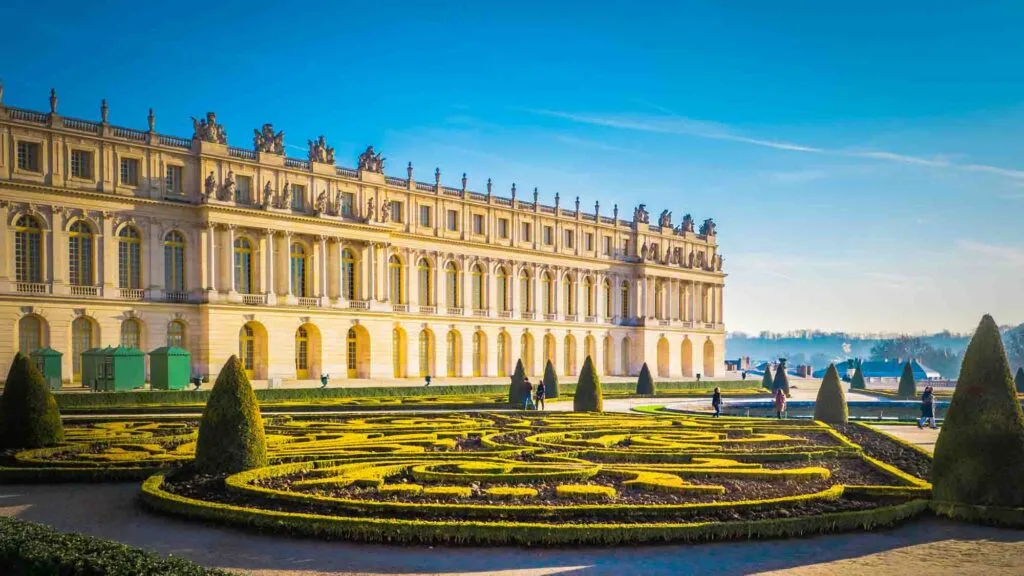
One of the best palaces in Europe is the Château de Versailles, close to Paris.
Originally a hunting lodge for Louis XIII, the palace was redone in 1661, stylized with marble halls and French gardens, to become the home of Louis XIV and one of the largest palaces on the continent.
This glamorous building and famous landmark in France is renowned for its delicate Baroque architecture, expansive gardens, and iconic Hall of Mirrors.
As for politics, the Treaty of Versailles of 1919 was negotiated in the Hall of Mirrors.
2. Buckingham Palace, England
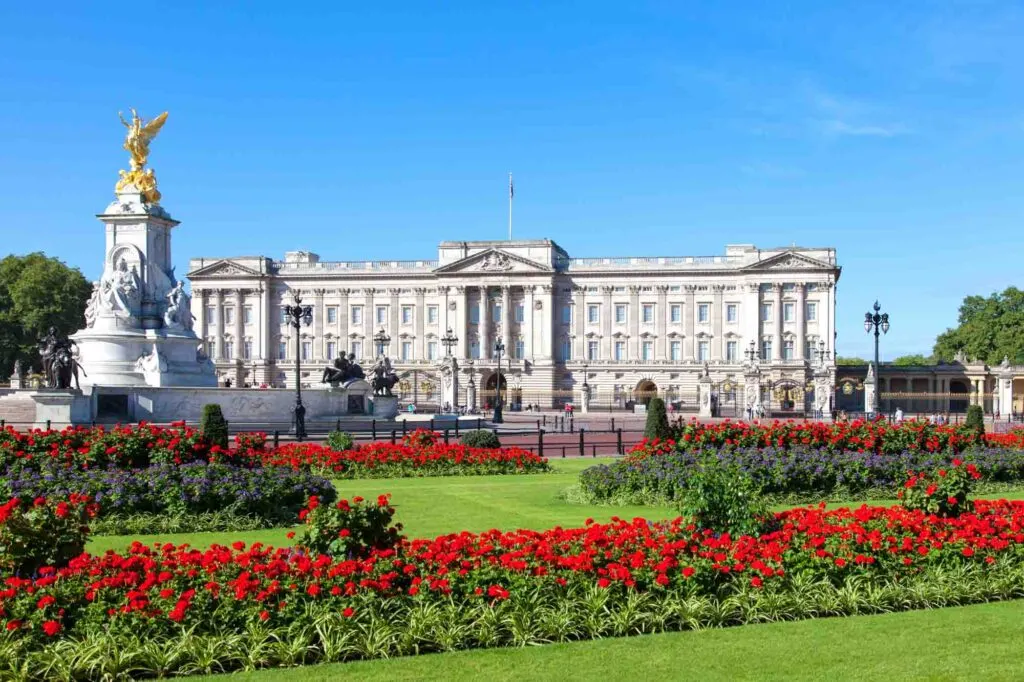
If you’re thinking of the best palaces in Europe, chances are that your first thought is Buckingham Palace.
This neoclassical architectural delight still homes England’s royalty and is the Monarch’s administrative headquarters – and it has been that way since 1837.
You’ll find this 320-year building that was first the royal home of the Duke of Buckingham in London – one of the most photographed landmarks in the city.
The building was purchased by King George III in 1761 as a gift for his beloved Queen Charlotte. The palace has a royal art collection, including works by Leonardo da Vinci.
Today, the castle is secured by the iconic guards in red suits and tall hats. Visitors have the unique opportunity to tour the historical State Rooms during the summer months.
Read next: 27 Most Beautiful Cities In Europe You Will LOVE
3. Nymphenburg Palace, Germany
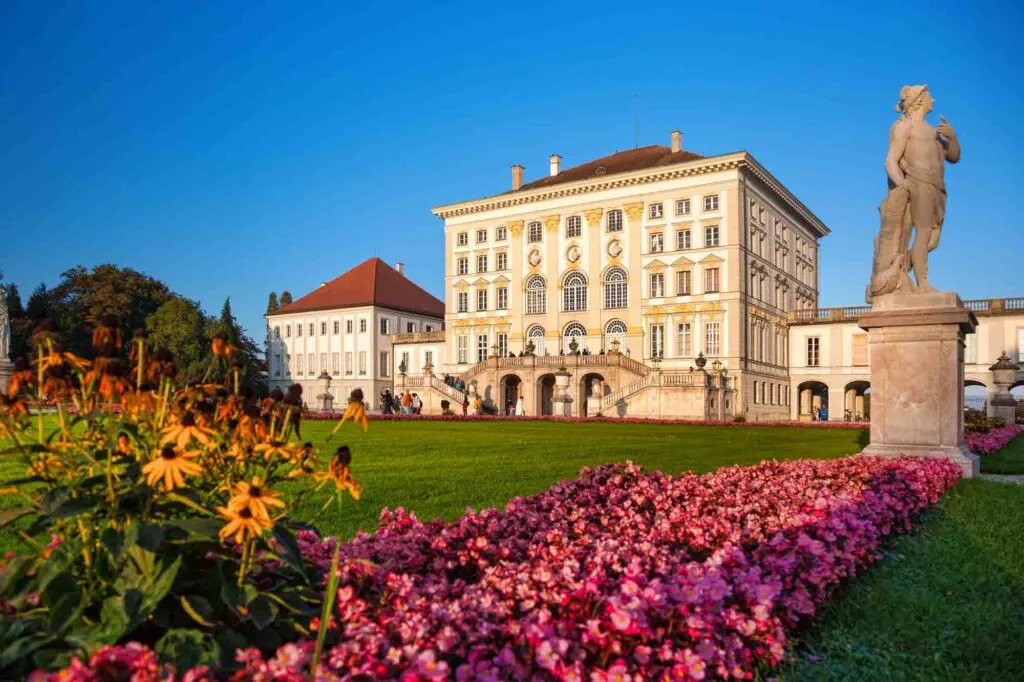
Another one of the most beautiful palaces in Europe is the Baroque Nymphenburg Palace in Munich, Germany.
It was commissioned by the Italian architect Agostino Barelli for electors of the Holy Roman Empire – built between 1664 and 1675.
Nymphenburg features numerous lavish halls, chambers, and rooms that showcase the class and luxurious style of the Bavarian royalty.
The 490 acres of royal gardens are carefully designed with flowerbeds, fountains, and pathways, with the Great Canal adding breathtaking beauty to this German landmark.
The palace has the Marstallmuseum, which features a collection of royal carriages and porcelain artifacts.
4. Reales Alcázars, Spain
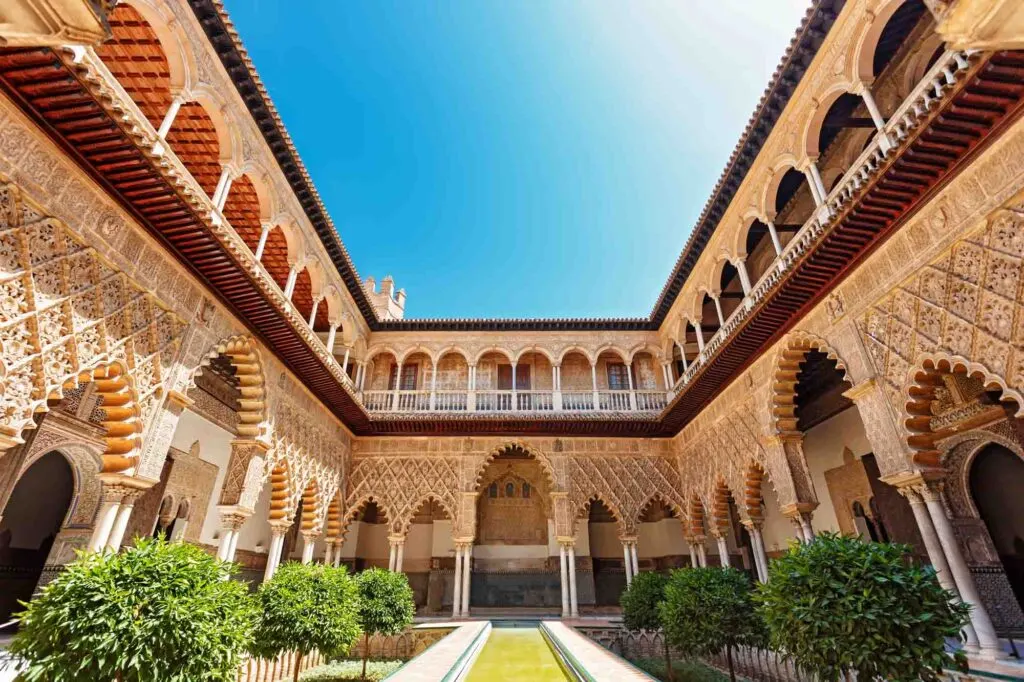
Royal Alcázars of Seville, historically called al-Qasr al-Muriq, is one of the royal palaces in Europe located in Seville, Spain.
It was built in 1248 during the Islamic rule of Spain and is a prime example of Moorish architecture in the country, featuring elaborate geometric patterns, lavish arches, and enhancing tilework.
Different Monarchs have used The Reales Alcázares as a residence, including various Spanish royals and dignitaries from varying religions.
It remains used for official ceremonies and events and is renowned for its beautiful gardens and structure, encompassing multiple styles and influences.
From the gorgeous designs of the Patio de las Doncellas to the tranquility of the Garden of the Poets, this palace is a living architectural timeline.
5. Schönbrunn Palace, Austria
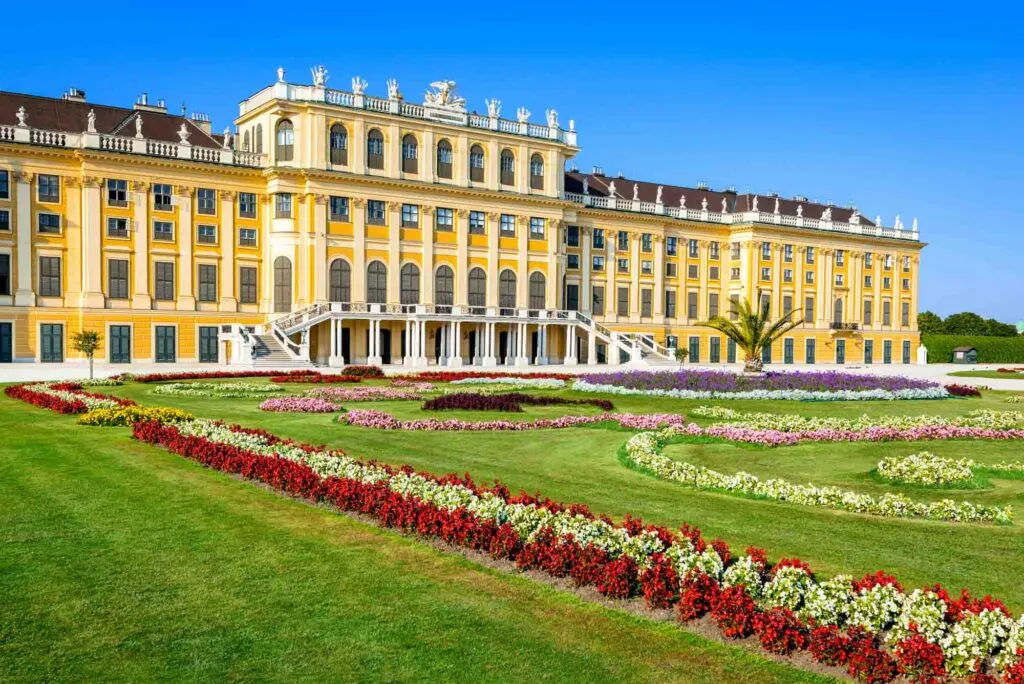
One of the most memorable Baroque palaces is Schönbrunn in Vienna. It was initially built to use as a hunting lodge in the 14th century before being refurbished to become the grand imperial palace you see today.
It was the summer home of the Habsburg monarchs, including Maria Theresa and Emperor Franz Joseph.
The palace has a Baroque architecture with Rococo-designed rooms. The building is lively yellow, has lavish detailing, and has 1,441 rooms, making it a true tourist marvel.
The castle hosts live bands and has free entrance to Maria Theresa, the Palace Chapel, where you’ll find elaborate artifacts, including a gilded sculpture of the Holy Trinity.
Read next: 21 Cheapest Places To Visit In Europe This Year
6. Royal Palace Amsterdam, Netherlands
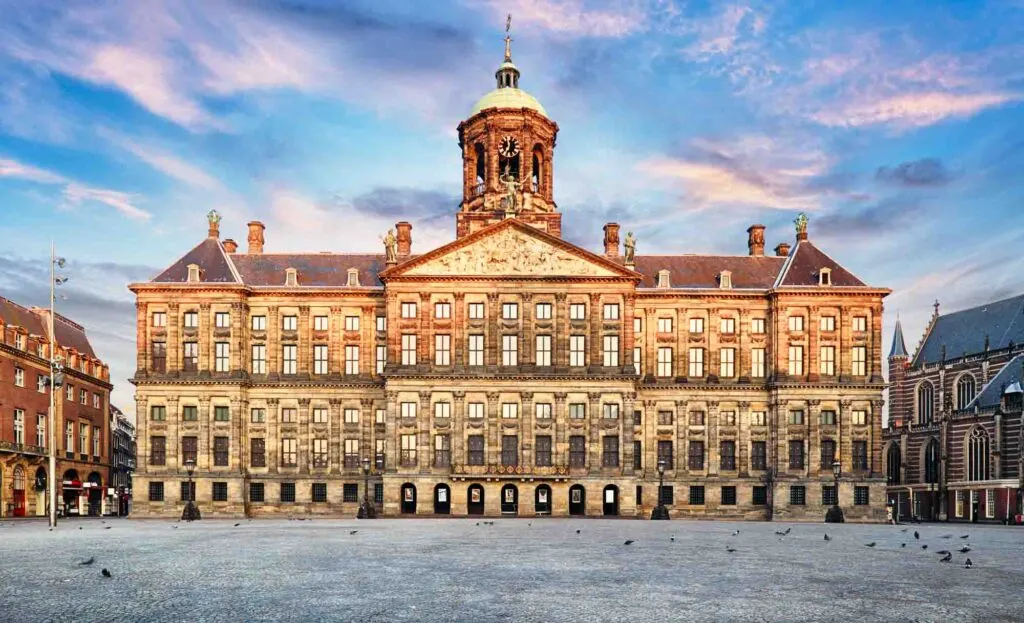
Did you know Amsterdam had a palace? While the country is famous for other greener things, it still has an impressive palace worth adventuring.
This marvelous architectural structure was established in 1648 as a city hall designed by Jacob van Campen.
It first became a temporary palace in 1768 for Prince William V, stadholder of the Netherlands, and officially became one in 1808 when the King Of Holland, Louis Napoleon, called it home.
Today, the Royal Palace of Amsterdam is a beloved tourist destination for entertaining and official functions, like state visits.
Besides the Dutch Classicism architecture, tourists can see remarkable collections of art, furnishings, and exhibitions and admire stunning views from the castle’s windows and balconies.
7. Pena National Palace, Portugal
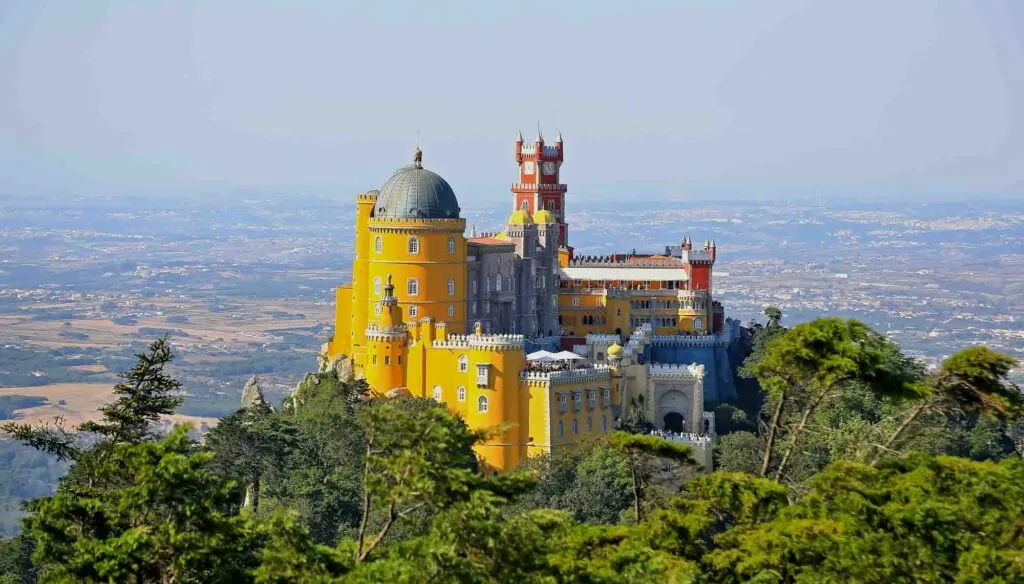
The Pena castle is in Sintra, Portugal, and has a fascinating history as far back as the Middle Ages, where a chapel was built and dedicated to Our Lady of Pena.
For many years, Pena was a quiet, meditative place for monks, and it was a royal summer home for a history of Portuguese royal families in the 19th century.
The Pena Palace is a claimed UNESCO World Heritage Site where tourists can visit the striking hues of red, yellow, and blue painted on the walls, along with the castle’s historical artifacts, numerous towers and tunnels, and panoramic views of Sintra and the Atlantic Ocean.
8. Topkapi Palace, Turkey
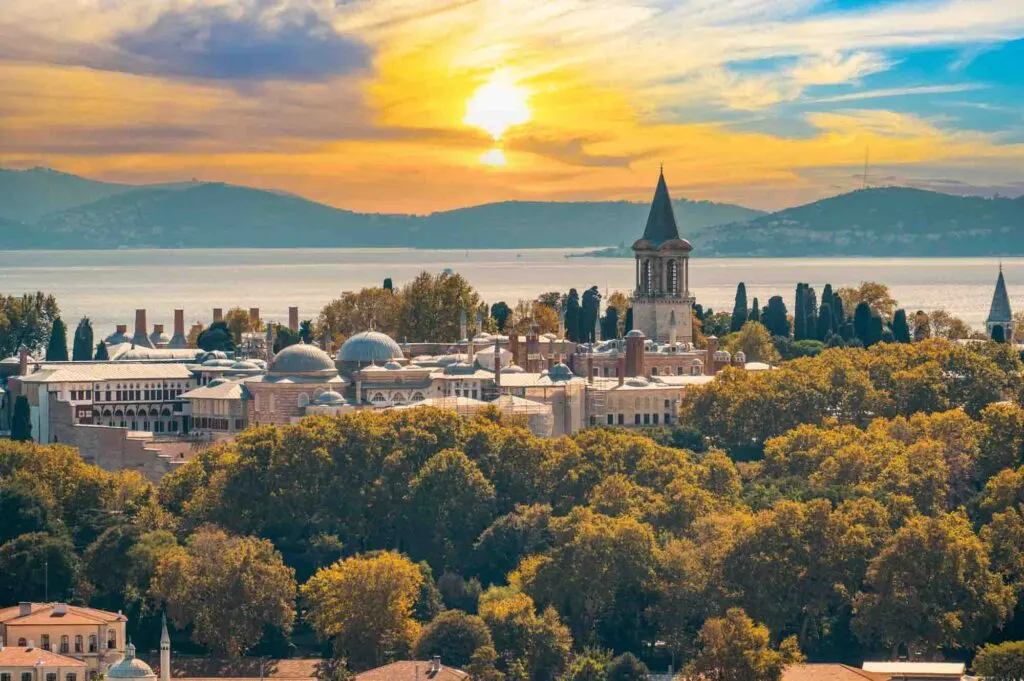
One of the lesser-known European palaces is Topkapi Palace in Istanbul, once home to 30 sultans over four centuries, including Mehmed II.
This architectural delight has many significant courtyards that were dedicated to specific ceremonies and processions, but the only one that tourists can visit is the Outer courtyard.
The museum and palace opened to the public in 1924 and holds many Ottoman Empire artifacts, like books, manuscripts, ceremonial weapons, precious jewels, and more.
The architecture is a mixture of Ottoman, Byzantine, and Persian influences, which is an intriguing sight for travelers to enjoy.
Read next: 21 Most Romantic Cities In Europe For A Couple Getaway
9. Drottningholm Palace, Sweden
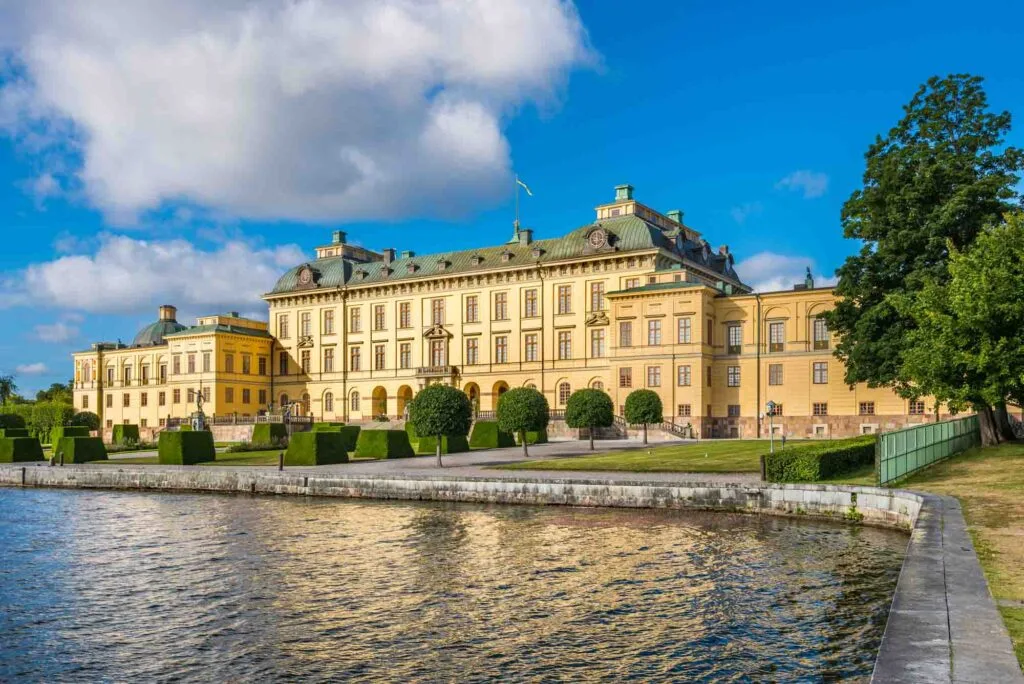
The Baroque architectural masterpiece Drottningholm, was built in the 17th century as a summer residence for King Charles X’s wife, Queen Hedvig Eleonora.
You can find the castle near Stockholm on the island of Lovön. The palace is still home to the Swedish royal family.
The palace and its gardens have been designated as a UNESCO World Heritage Site, and today, tourists can visit Drottningholm and enjoy the elaborate Rococo-style architecture, the Chinese Garden, the 18th-century theatre, the palace’s elegant royal chapel, and its historical interiors.
10. Hofburg Palace, Austria
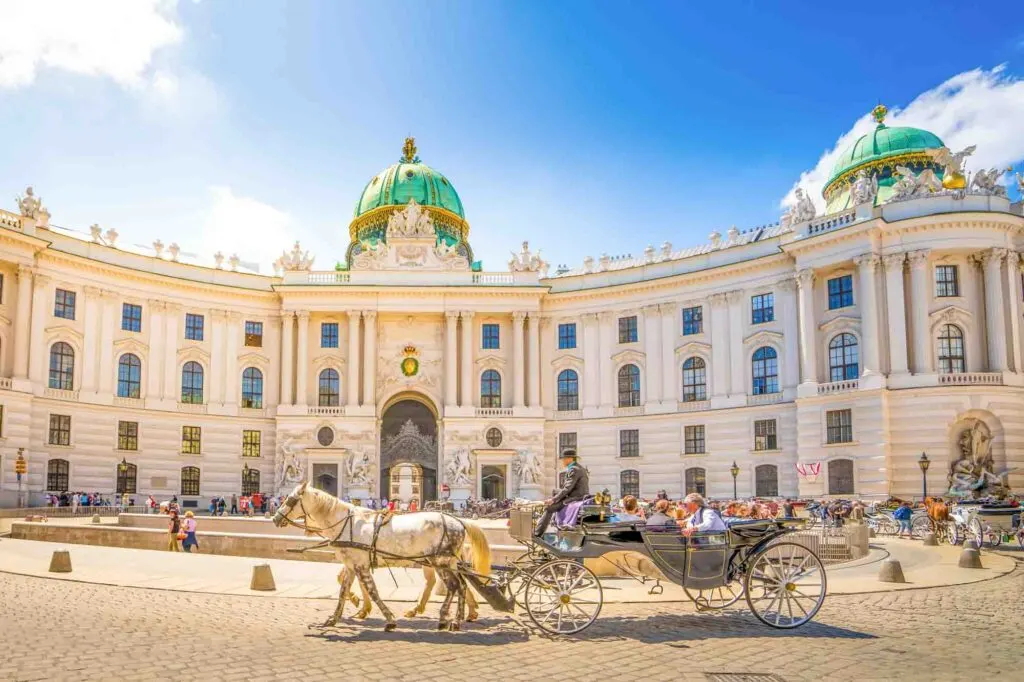
European palaces would be incomplete without the mention of Hofburg in Vienna, Austria.
The building has been around since the 13th century and played a crucial role in Austrian history and the Habsburg dynasty. The palace has seen many weddings, state ceremonies, and negotiations.
It was the royal residence of many Habsburg emperors and empresses, like Emperor Franz Joseph I, and is the residence of the current Austrian president.
Due to many extensions, the building combines Gothic, Renaissance, Baroque, and Rococo architectural styles.
The castle houses one of the oldest riding schools in the world, the Spanish Riding School.
Tourists can visit the palace, its unique rooms, the stunning gardens, and the various museums like the Sisi Museum, which has historical artifacts from Empress Elisabeth.
11. Catherine Palace, Russia
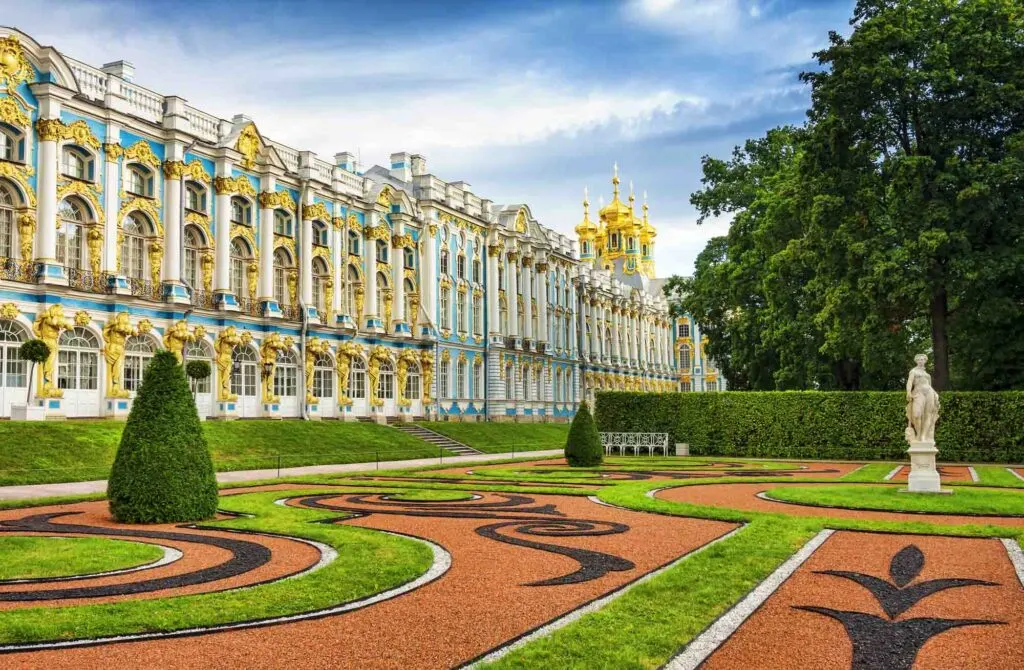
One of the most fascinating European palaces is Catherine Palace in Russia. It was built for Catherine I, wife of Peter the Great, and named after her.
Her granddaughter, Catherine II, didn’t like the design much, so she had it redone and added numerous neoclassical structures.
The Amber Room is one of the most remarkable features of the castle, adorned with amber panels, gold leaf, vintage mirrors, and elaborate mosaics.
You can also visit the Grand Ballroom, numerous staterooms, the vast Catherine Park gardens, the quaint chapel, and the royal collection of artifacts featuring furniture, porcelain, and art.
12. Rundāle Palace, Latvia
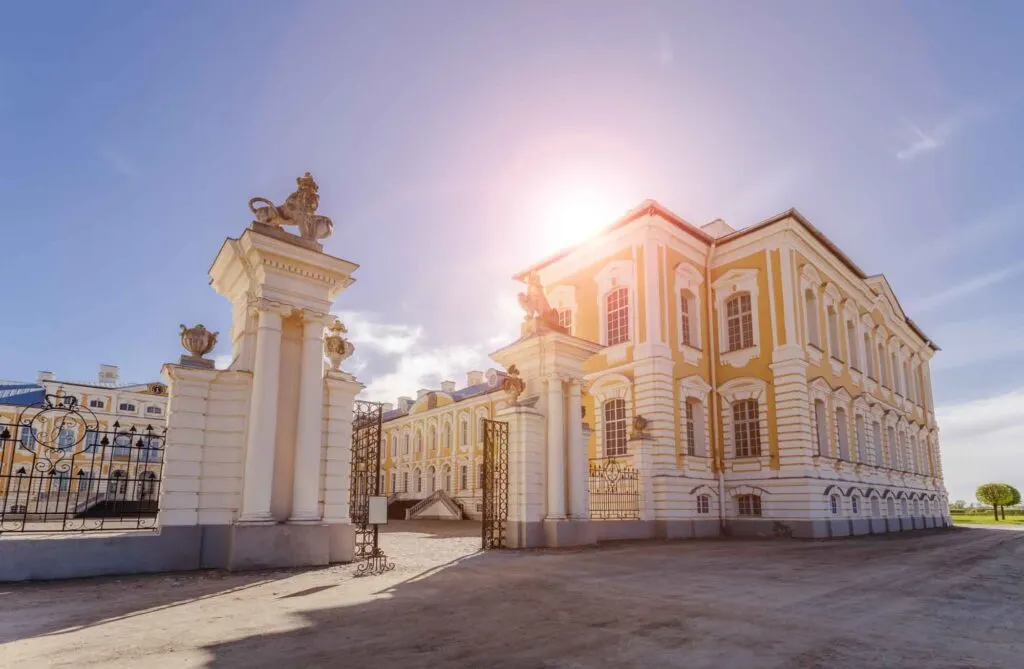
This gorgeous Latvia palace is just over 84 acres and perfectly exemplifies Baroque architecture.
The palace started as Rundāle Manor in the 15th century but was bought and rebuilt between 1736 and 1740. It is one of the few examples of architecture that hasn’t been modernized since the 18th century.
The palace features décor that is around 85% authentic, paintings by Francesco Martini and Carlo Zucchi, marble sculptures, and 18th-century furniture.
Rundāle has one of the most exquisite French-style gardens and a forest park with stunning crosspaths, pergolas, fountains, terraced lawns, and a rose garden.
Tourists can also visit the museum, sometimes hosting classical music festivals, learn about the lives of the nobility, and learn more about the other associated famous palaces, Schönbrunn, Versailles, and Sanssouci.
13. Alhambra Palace, Spain
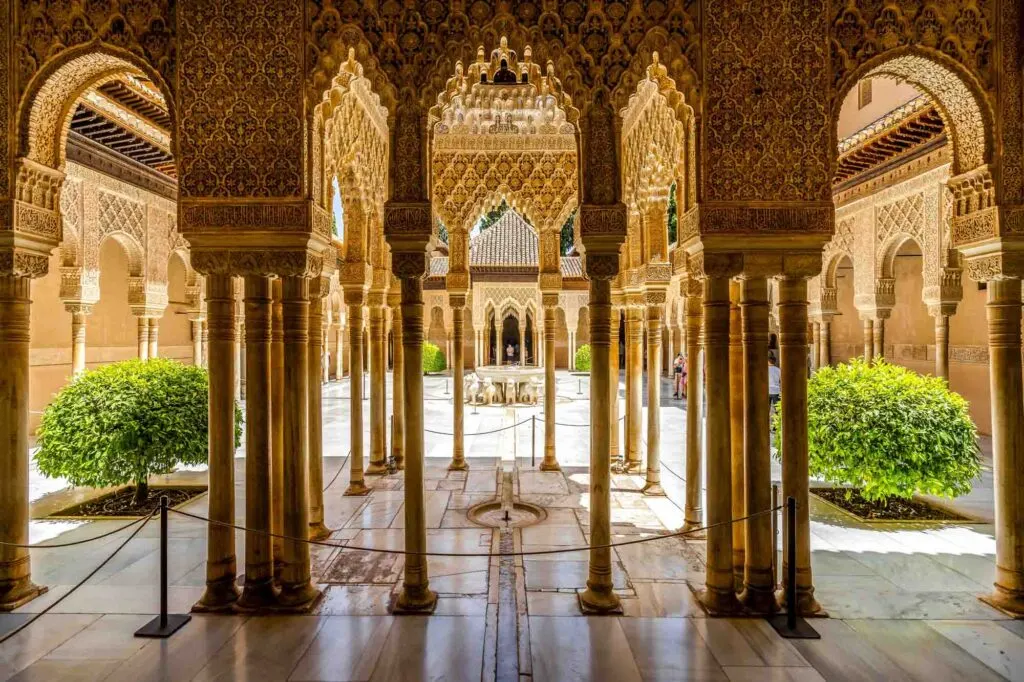
One of the most exquisite European palaces is located in Granada, Spain – The Alhambra.
The castle was initially constructed in the 13th century during the Nasrid Dynasty, and it displays the essential cultural history of Al-Andalus, the Islamic ruler of Spain.
The Alhambra is celebrated for its elaborate stucco work, complex tile mosaics (known as azulejos), spectacular calligraphy, and gorgeously landscaped gardens.
The attention to detail in all its design is breathtaking. Alhambra is actually in a palace complex with the Nasrid Palaces, Generalife Gardens, the Alcazaba Fortress, and the Palace of Charles V – so there is plenty to see here!
14. Blenheim Palace, England
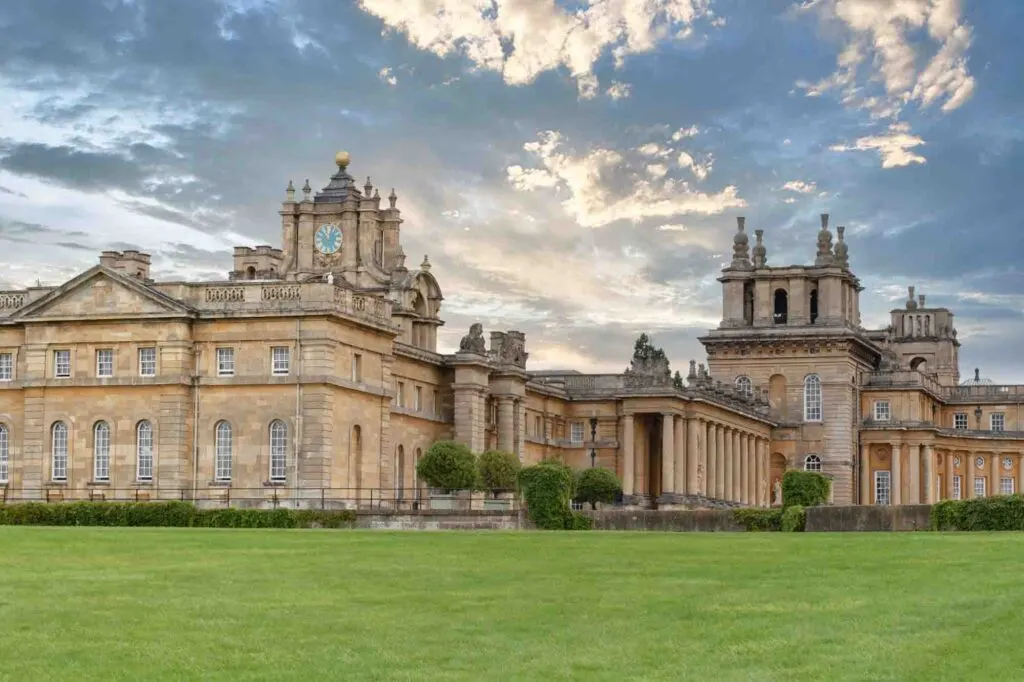
Another United Kingdom addition to the European palaces is the non-royal Blenheim in Oxfordshire, England.
Blenheim Palace Palace is the birthplace of Sir Winston Churchill, the celebrated British political leader who led the United Kingdom during World War II. Visitors can explore the room where he was born.
Blenheim is a fine example of Baroque architecture. It was engineered by the architect Sir John Vanbrugh, and it reflects one of Britain’s finest examples of the Baroque style.
The palace features cultural and historical significance, and you can walk through its rich history in the many state rooms adorned with magnificent paintings like the Great Hall, the Long Library, and the Green Drawing Room.
Blenheim also has an impressive parkland designed by Capability Brown, featuring lakes, forests, and gorgeously designed gardens. The palace also has the breathtaking Formal Gardens and Water Terraces Garden.
15. Pitti Palace, Italy
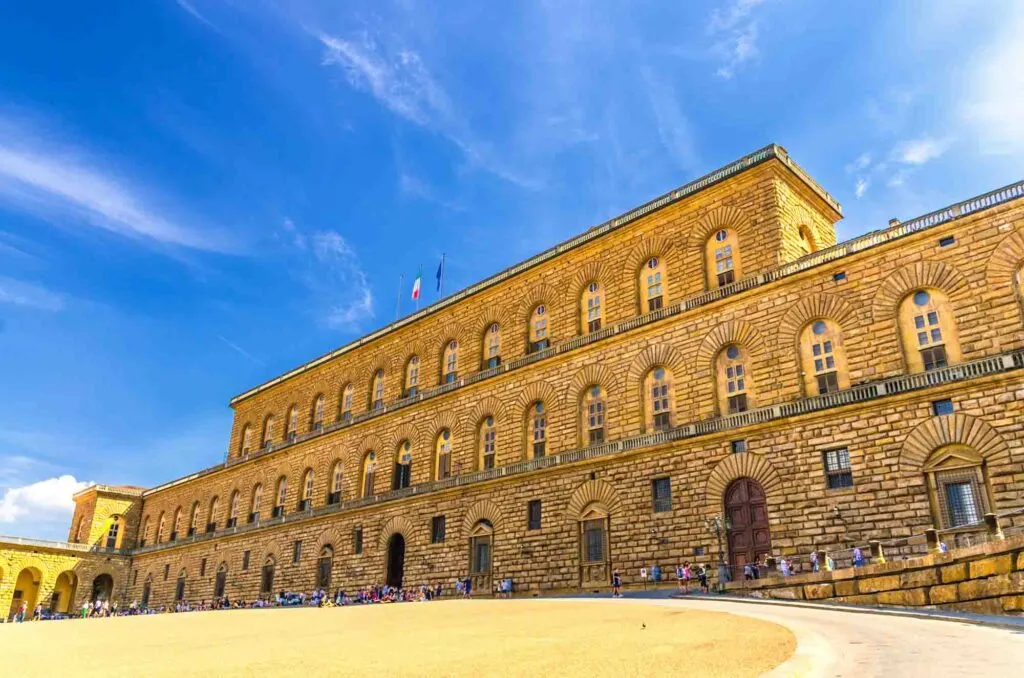
The Palazzo Pitti is mainly a Renaissance building in Florence, Italy, built in the 15th century for Luca Pitti, a Florentine banker.
Later, it became home to the Medici family, prominent art patrons who ruled Florence for centuries.
The palace has numerous museums and galleries, the most notable being the Palatine Gallery, which has a huge collection of Renaissance and Baroque paintings by artists like Raphael, Titian, Rubens, and Caravaggio.
Tourists can also visit The Silver Museum, which has a silverware, jewelry, and decorative arts collection.
Or The Costume Gallery with costumes, textiles, and accessories, showing the historical fashion.
Like most palaces, Pitti has the dazzling Boboli Gardens, which has a terraced layout, intricate statues, and fountains complimented by the scenic views of Florence.
16. Sanssouci Palace, Germany
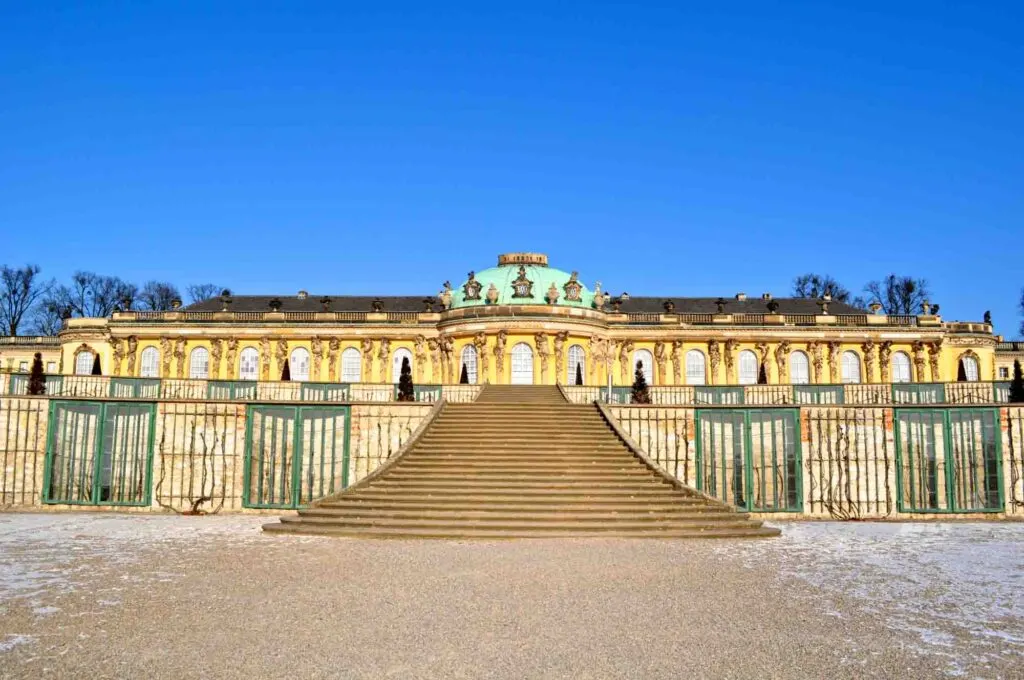
One of the most elaborate European palaces, Sanssouci, is located among the vineyard terraces of Potsdam, Germany.
It was built for King Frederick the Great as a summer home, which was his blissful escape, and the palace is named Sanssouci, which means ‘carefree.’
This Rococo masterpiece features elegant faces, graceful curvatures, and elaborate decorative designs inside and out.
Tourists can learn more about the palace’s Prussian history by walking through its temples, halls, and staterooms.
The elaborate Sanssouci Park surrounds the palace and has Orangerie and Neues Palaces nearby for further exploration!
17. Popes Palace, France
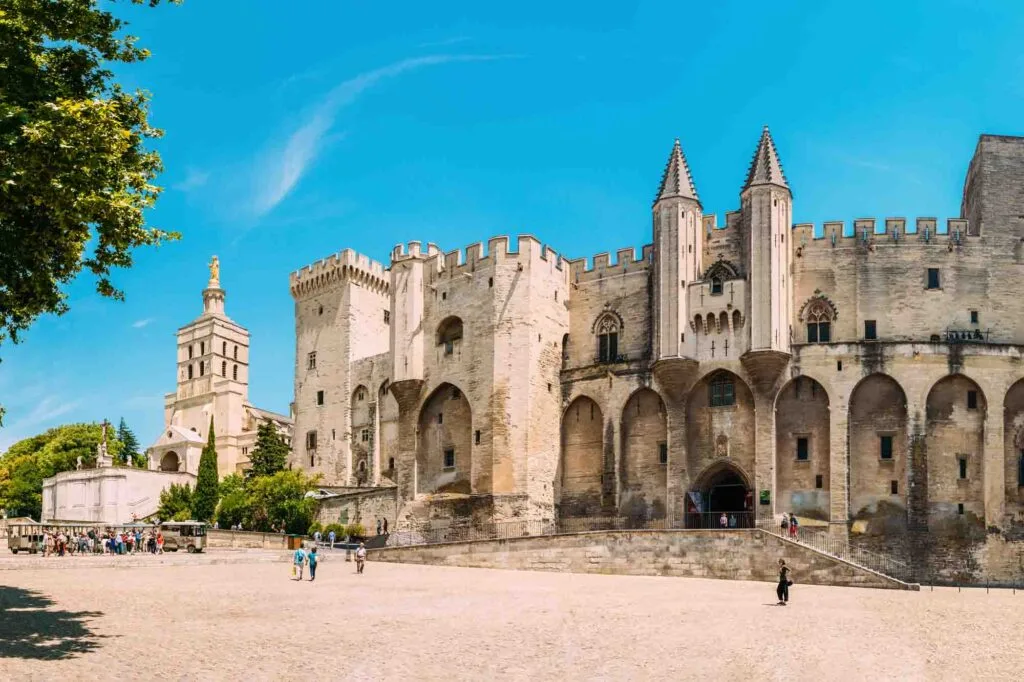
Palais des Papes is a monumental palace located in Avignon, southeastern France.
It holds a significant place in European history as it was the executive residence of a series of popes during the Catholic Church’s Avignon Papacy in the 14th century.
It is one of the biggest and most significant medieval Gothic buildings in all of Europe.
The gorgeous building has several courtyards, including the most popular Court of Honor and the Court of the First Palace. Each yard has its own character and architectural detailing.
The palace complex also hosts The Saint-Martial and Saint-Jean chapel, boasting high-vaulted ceilings, architectural brilliance, and detailed paintings.
18. Chambord, France
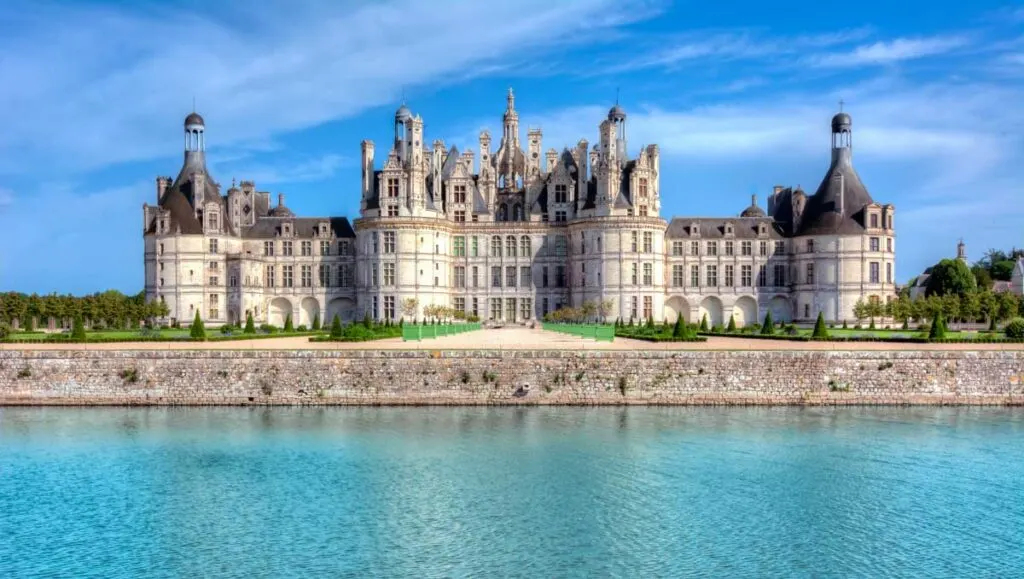
One of the most astounding European palaces is Château de Chambord in the Loire Valley of France.
It was the home of King Francis I in the early 16th century and served as a royal hunting lodge during the French Renaissance.
The palace is celebrated for its distinct blend of Renaissance and medieval architectural elements.
It features four massive circular towers topped by a striking double helix staircase called the “open staircase.”
The building is surrounded by carefully landscaped gardens and the vast Chambord Forest. Tourists can take guided tours, which provide details of its history, including the life of King Francis I.
19. Christiansborg Palace, Denmark
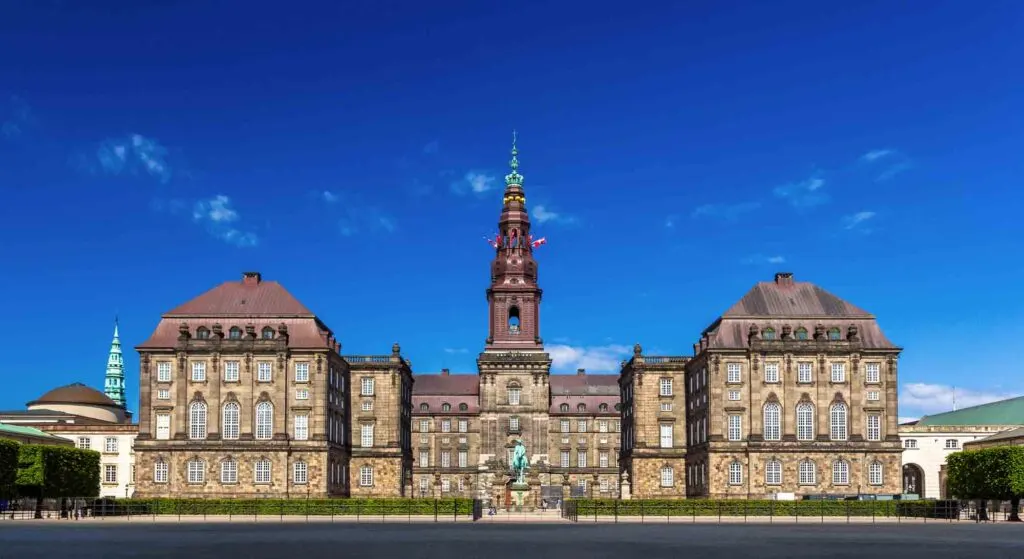
Christiansborg Slot rests in the heart of Copenhagen, Denmark. Christiansborg has been the facilitating building of Danish politics for centuries.
It houses the Danish Parliament, the Supreme Court, and the Prime Minister’s Office, where the Danish Monarch carries out official duties.
The tourist experience includes touring the palace’s Neo-Baroque and Neo-Rococo architectural styles, including its central dome, grand facades, and lavish interiors.
They can also visit the tower, which offers panoramic views of Copenhagen. Royal Kitchen Museum displays the history of Danish cuisine and past royal banquets.
20. Grand Ducal Palace, Luxembourg
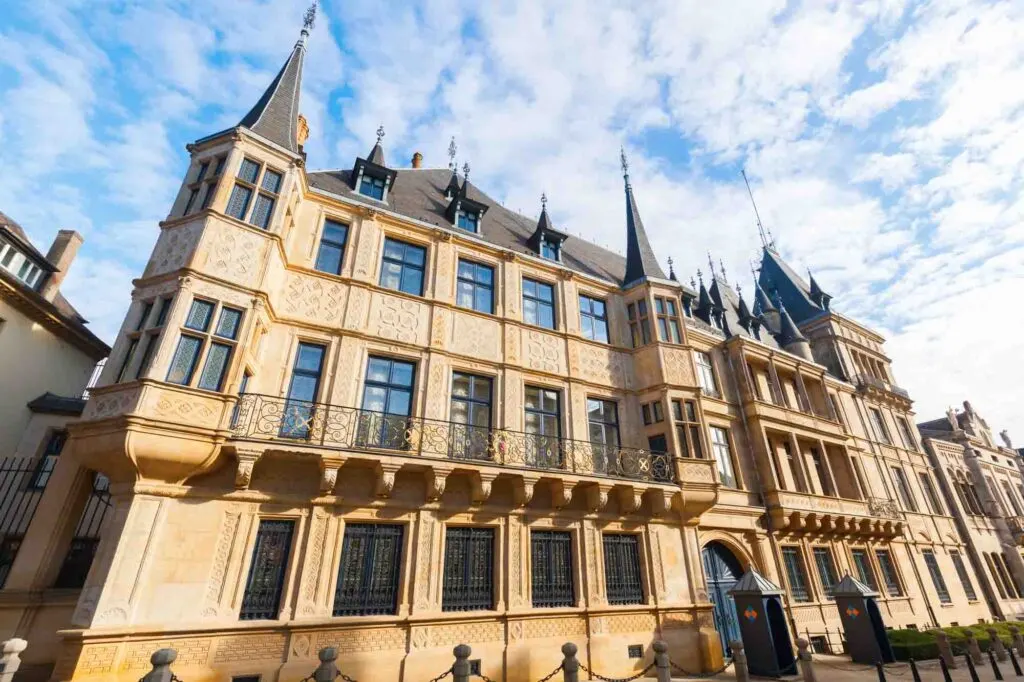
One of the most beautiful palaces in Europe is the Palais Grand-Ducal, – a historic palace in Luxembourg.
It serves as the official residence of the Grand Duke of Luxembourg and has seen many treaty signings, state banquets, and official receptions.
The palace is a splendid showcase of Renaissance Revival architecture and has a scenic courtyard with a grand staircase and a statue of William II from the 19th century.
Tourists can enjoy the Changing of the Guard ceremony and various exhibitions, cultural events, and concerts.
21. Winter Palace, Russia
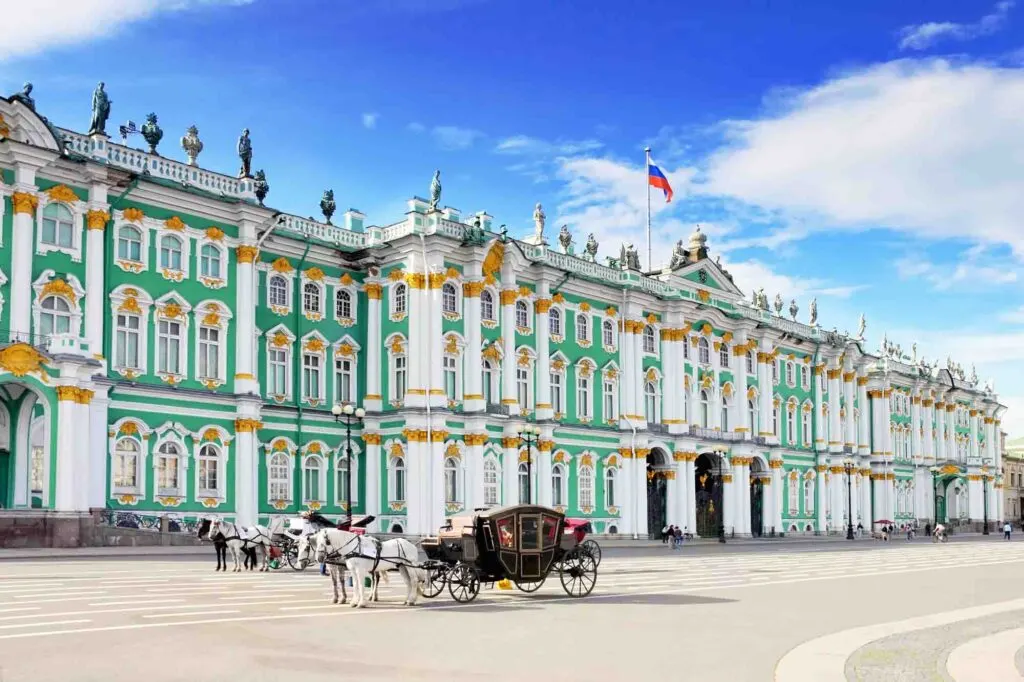
To end off this lavish list of European palaces, Winter Palace deserves a mention. The Winter Palace, also called the Hermitage Museum, is in St. Petersburg, Russia.
It was the official residence of many Russian emperors between 1732 to 1917.
This Baroque and Rococo architectural marvel has lavishly decorated staterooms, one of the most important art museums in the world, and various exhibitions featuring art and artifacts from around the world.
Tourists can also enjoy arriving at the palace via a river cruise along the Neva River.
Other Castles and Palaces in Europe Worth Checking Out
Neuschwanstein Castle
Windsor Castle
Chateau de Chambord
Miramare Castle
Royal Palace of Madrid
Kensington Palace
Montserrat Palace
Royal Palace of Brussels
Chateau de Fontainebleau
Lednice Chateau
Our best travel tips & resources:
Here're our all-time favorite travel tips & resources so that you can save money and plan your travel logistics hassle-free! For more travel resources, check out our travel tips.- Saving money: Fly on offseason, winter (not Xmas or NYE), Tuesday, or Wednesday! According to experts, these are the cheapest days to fly.
- Travel insurance: Before you leave for your trip, make sure you have a valid travel insurance policy because accidents happen on the road. We have been paying for Safety Wing travel insurance for a little over a year now, and we happily recommend them to our family and friends.
- Accommodation: We usually stay in mid-range comfy hotels or private rooms in hostels. These are the sites we use to book accommodation: Booking.com for hotels (excellent flexible cancellation policy) and Hostelworld for hostels (low deposit and easy cancellation).
- Tours:We absolutely love booking guided tours with locals to get a history lesson while sight-seeing, especially food tours and walking tours! We book all of our tours using Viator and GetYourGuide.
- Transportation: We use Google Maps to figure out how to get around a place using public transport. When we book a rental car, we always use Discover Cars to find the best deal.
